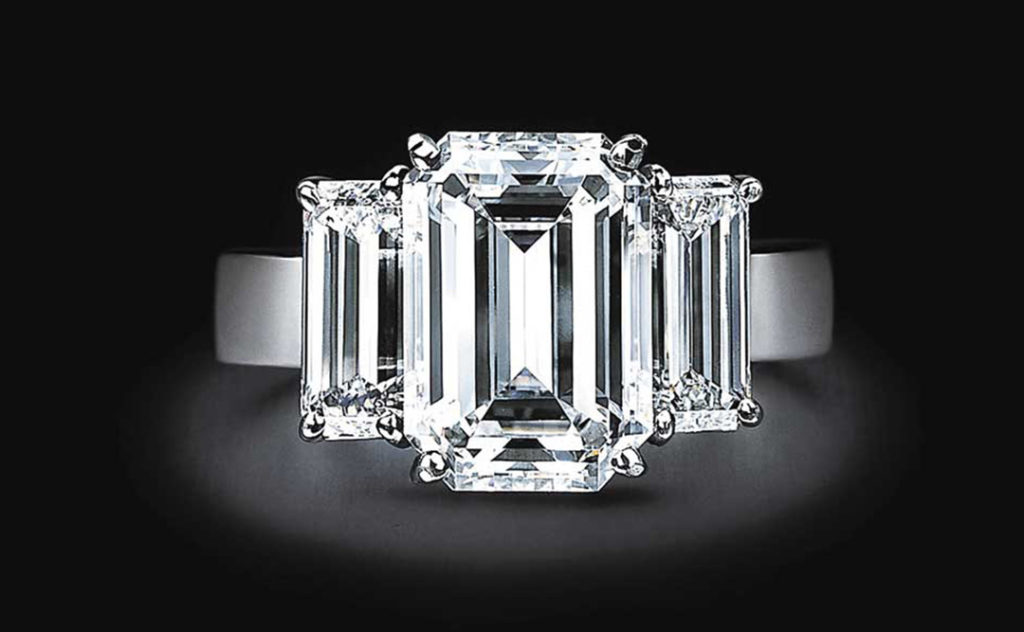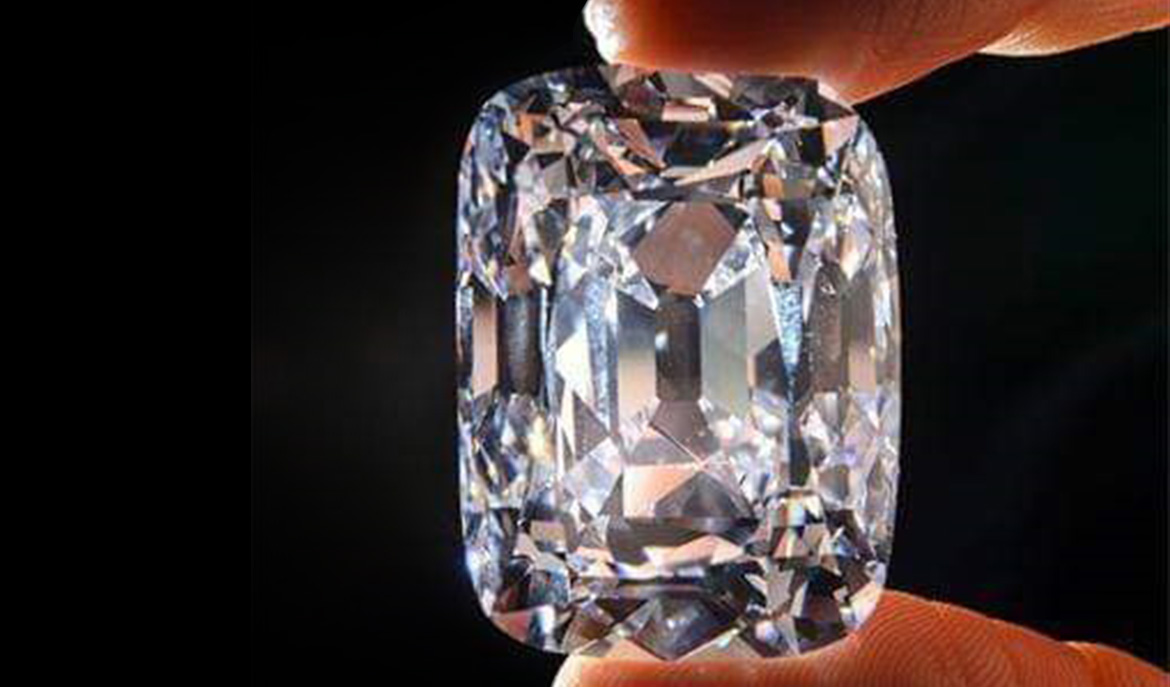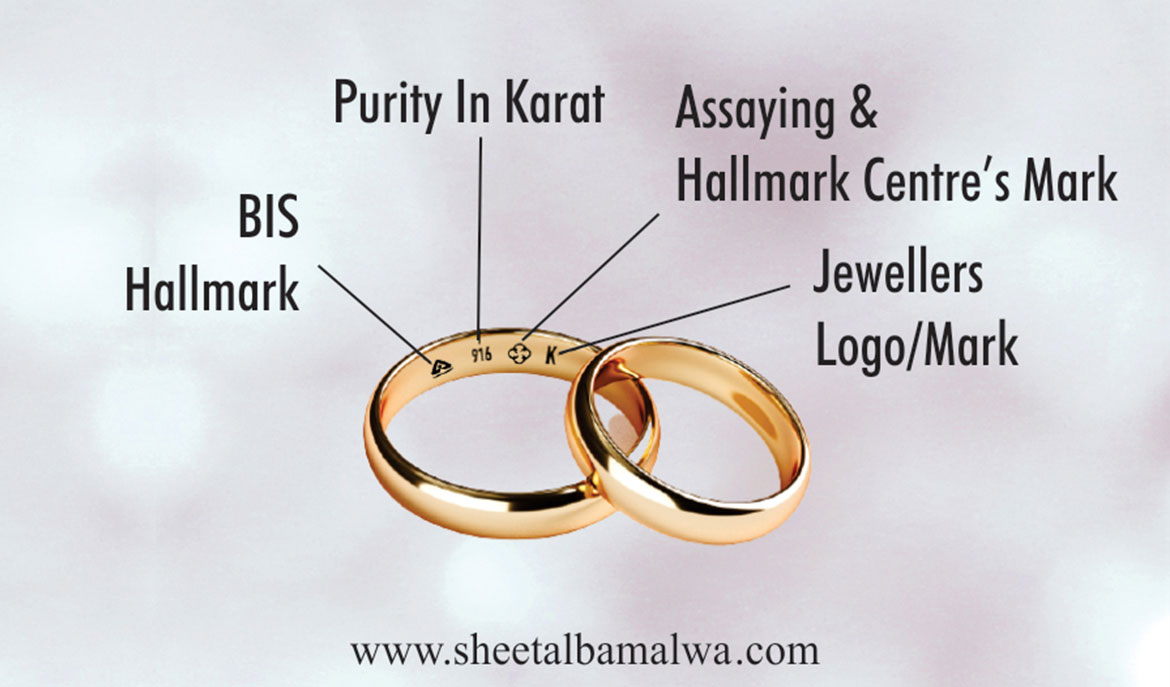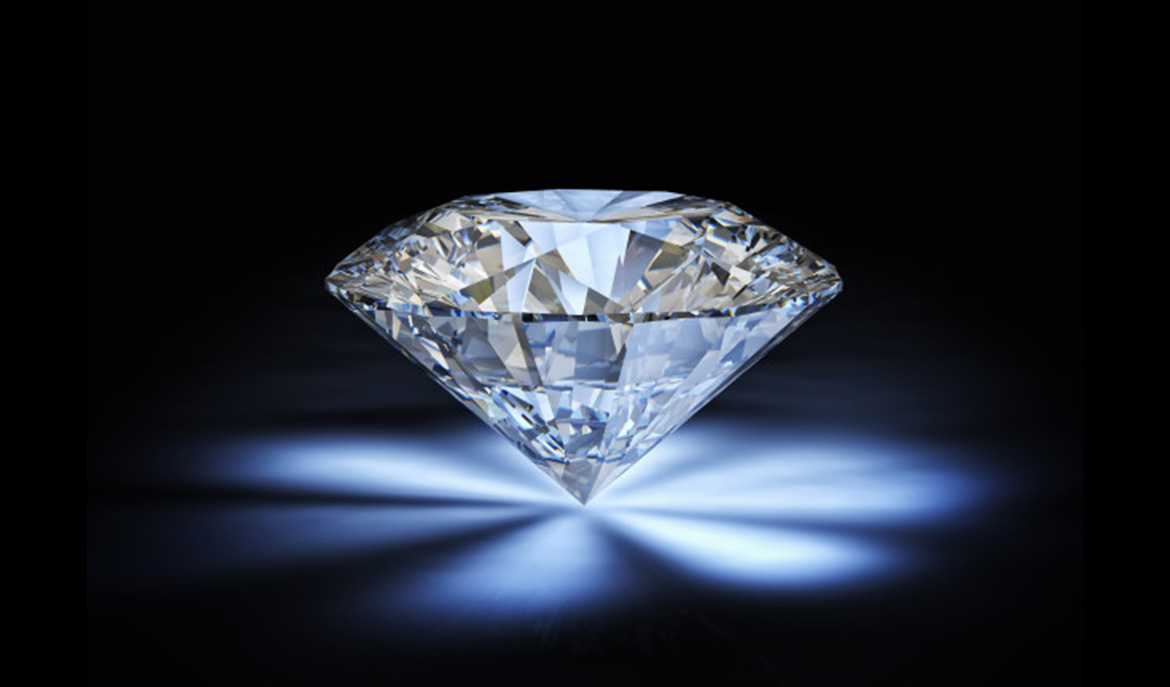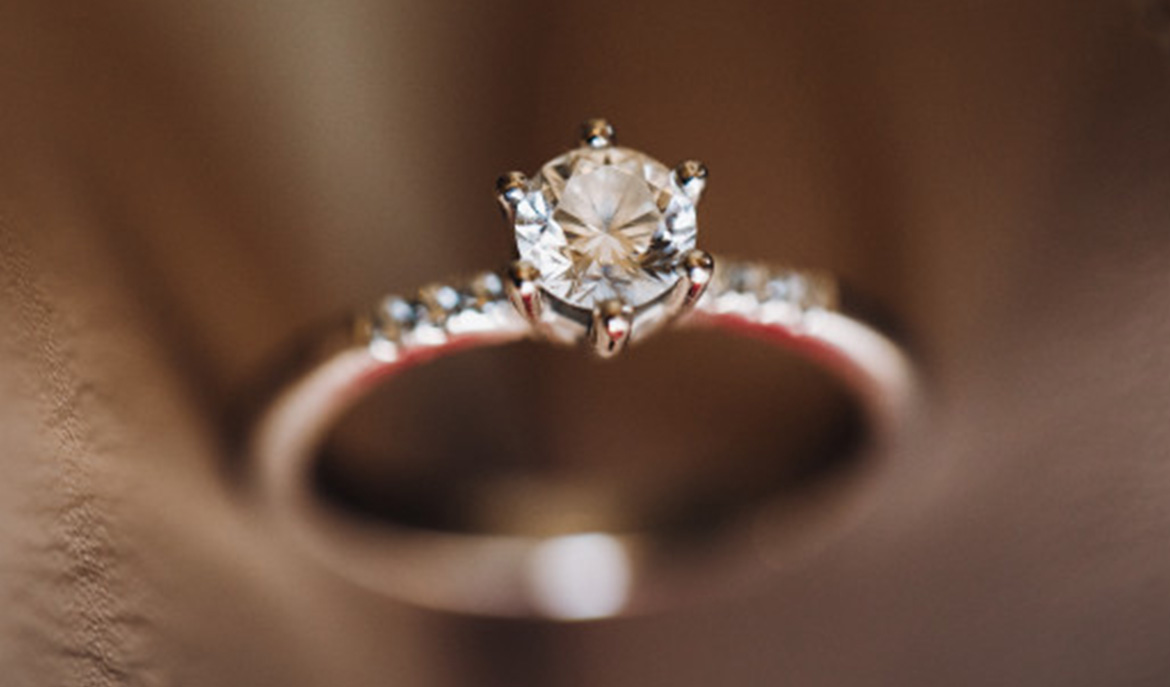Diamond Parameters
Facet
Facets are flat faces on geometric shapes. These are the polished surface on a finished gemstone. Gemstones commonly have facets cut into them in order to improve their appearance by allowing them to reflect light. The brilliance and shine of a diamond are dependent upon the proportion and location of the facets.
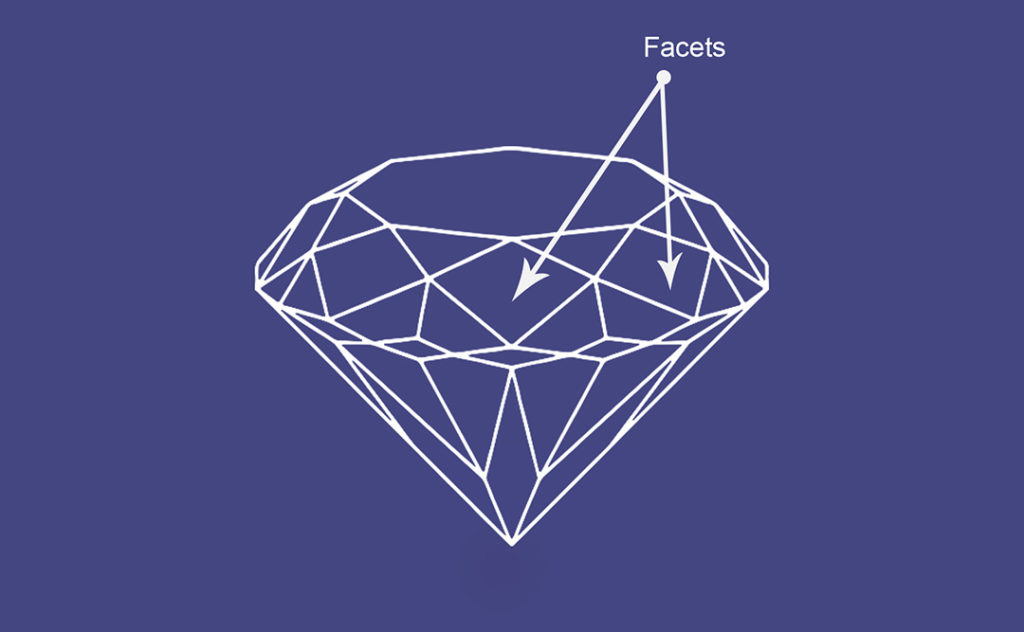
Table
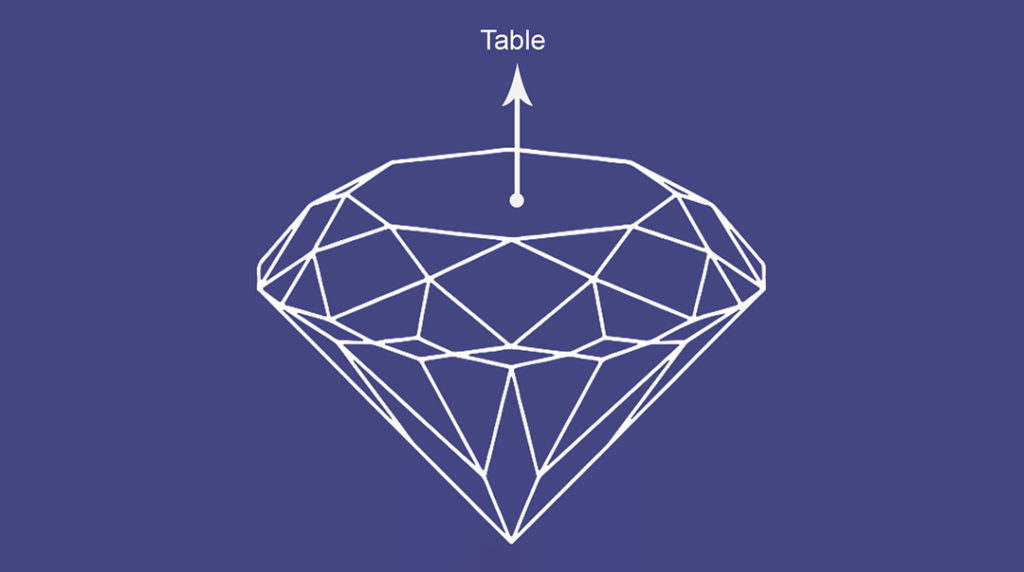
A diamond’s table is the largest facet of the stone. It is the flat surface on the top. The table percentage varies with the shape of the diamond. Being the largest facet on a diamond, a table plays a vital role on the brilliance and light performance of a stone. The main purpose of a table is to refract light rays entering the diamond.
Culet
In Gemology, small facet at the bottom tip of a gemstone is known as Culet. The culet can be a point or a very small facet sitting parallel to the table. A diamond’s culet is important because it can affect the appearance of a diamond when viewed from above. Old diamonds/Golconda diamonds had their culet cut. That is also a feature that helps us identify the old cut diamonds.
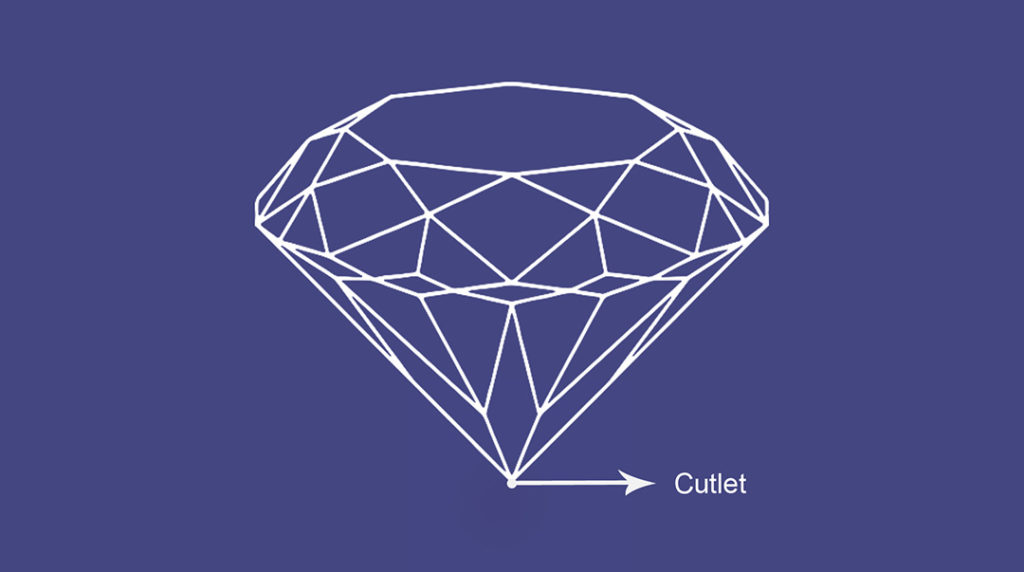
Depth
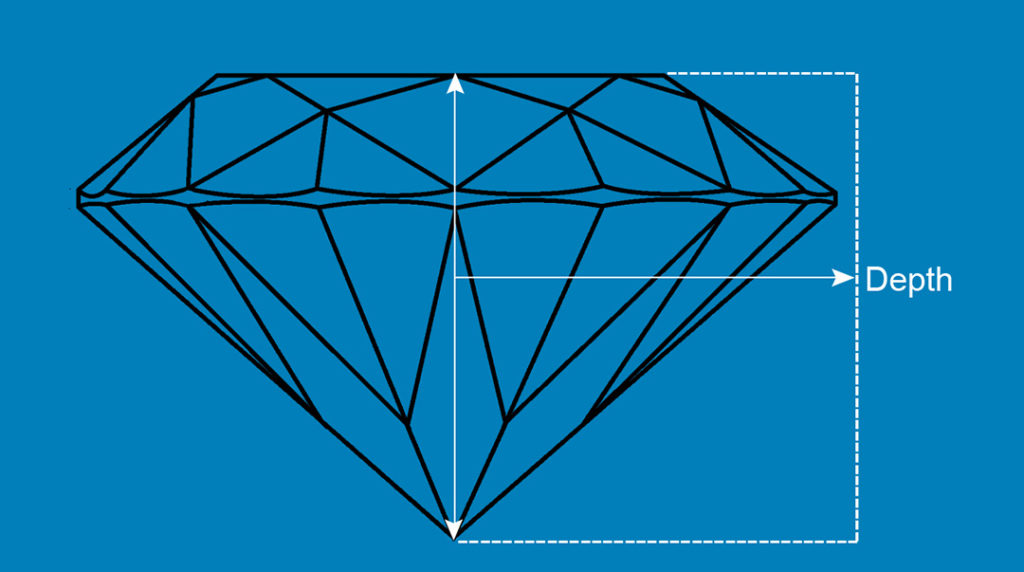
The depth of a diamond is its height measured from the culet to the table. The second is the depth percentage, which shows how deep the diamond is in relation to its width. The ideal depth percentage varies in accordance with the shape of the diamond. Though, the ideal proportion of a diamond for a depth percentage is between 58 to 60% for round diamonds.
Girdle
The girdle is the outer edge of the diamond, where the crown (top) meets the pavilion (bottom). The girdle is the thin perimeter of a diamond, dividing the above crown from the pavilion below. The girdle is measured from ‘extremely thin’ to ‘extremely thick’. It is preferable to avoid extremely thin girdle as it is too fragile and can chip easily. Very thick girdle also hinders the shine and sparkle.
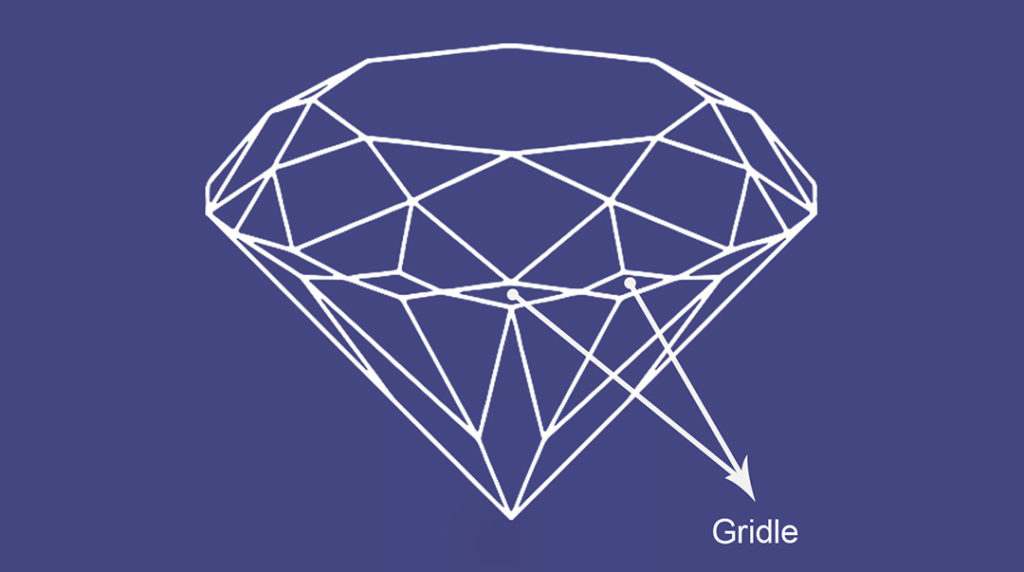
Crown
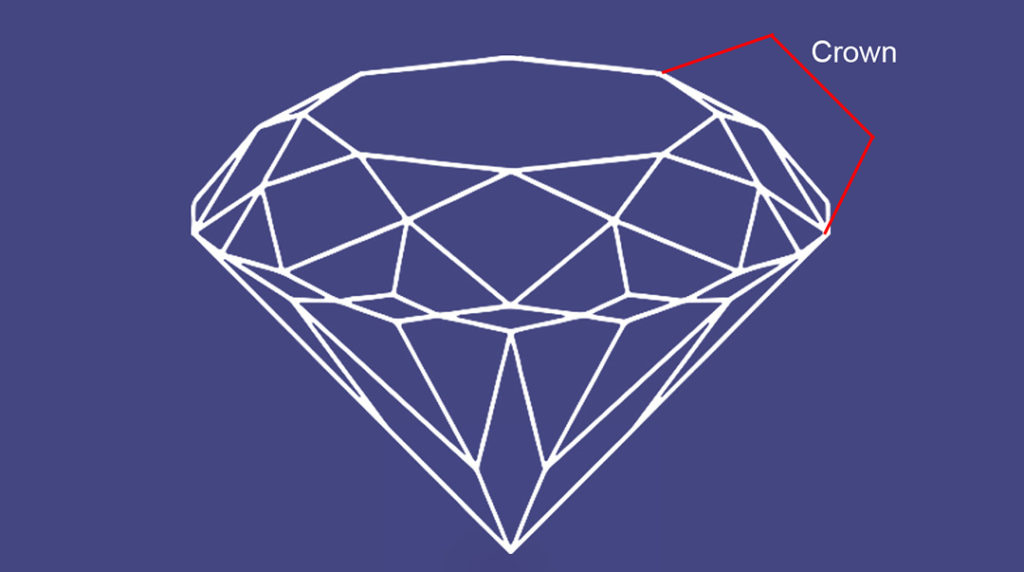
The depth of a diamond is its height measured from the Crown is the portion of the diamond between its girdle and its table. The Crown angle in the well-cut diamond should be 33 to 35 degrees. In a diamond, the crown and table facets act as windows, driving light, return and ultimately determining the brightness & fire of the diamond.culet to the table. The second is the depth percentage, which shows how deep the diamond is in relation to its width. The ideal depth percentage varies in accordance with the shape of the diamond. Though, the ideal proportion of a diamond for a depth percentage is between 58 to 60% for round diamonds.
Pavilion
Pavilion angle is another important dimension of the stone, which determines its brilliance and fire. The relationship between the crown and the pavilion angle has a great effect on the look of the diamond. A slightly steep pavilion angle can be complemented by a shallower crown angle, and vice versa. The pavilion depth of a stone should ideally be 42.5% to 43.5%.
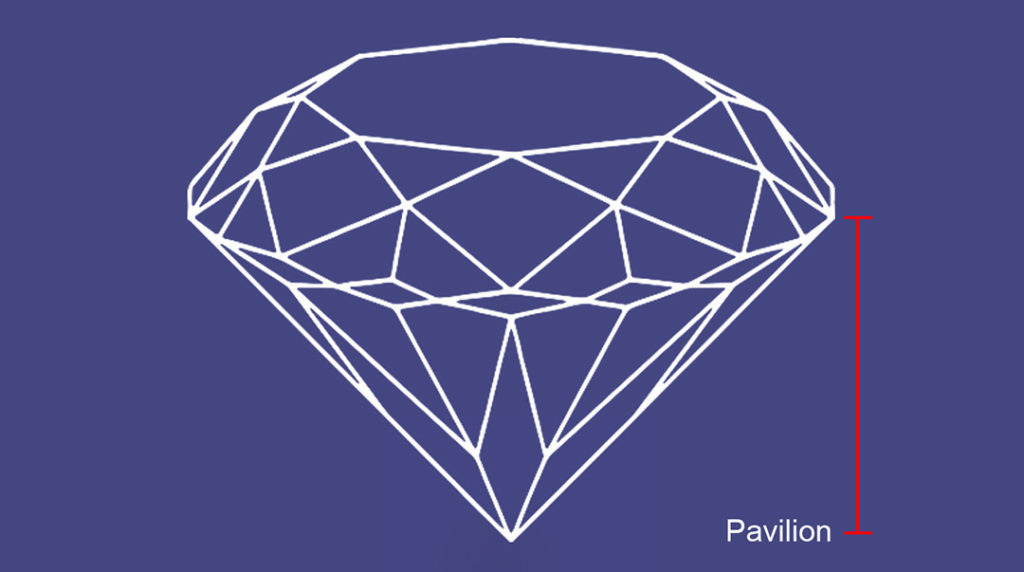
Inclusions & Blemishes
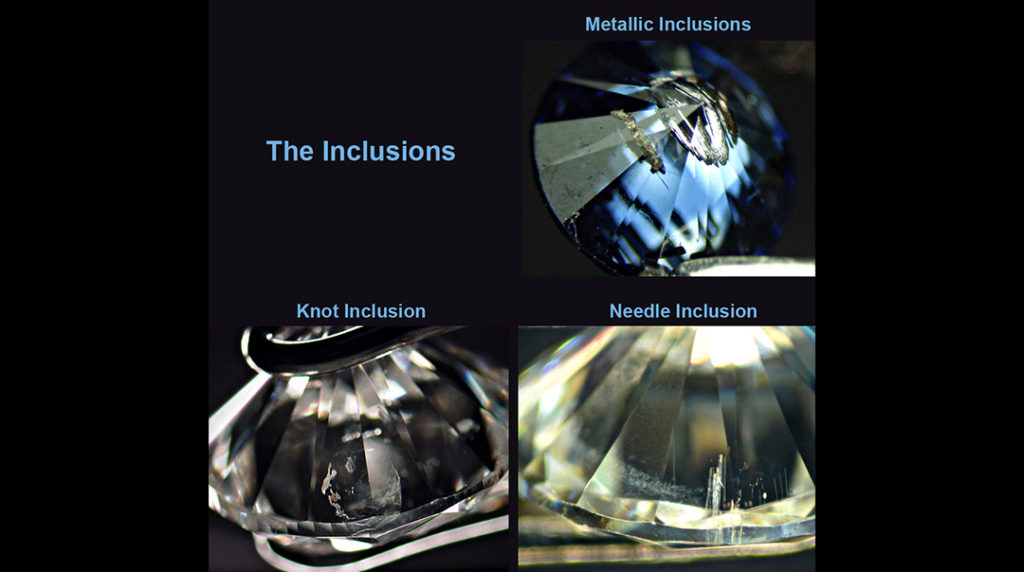
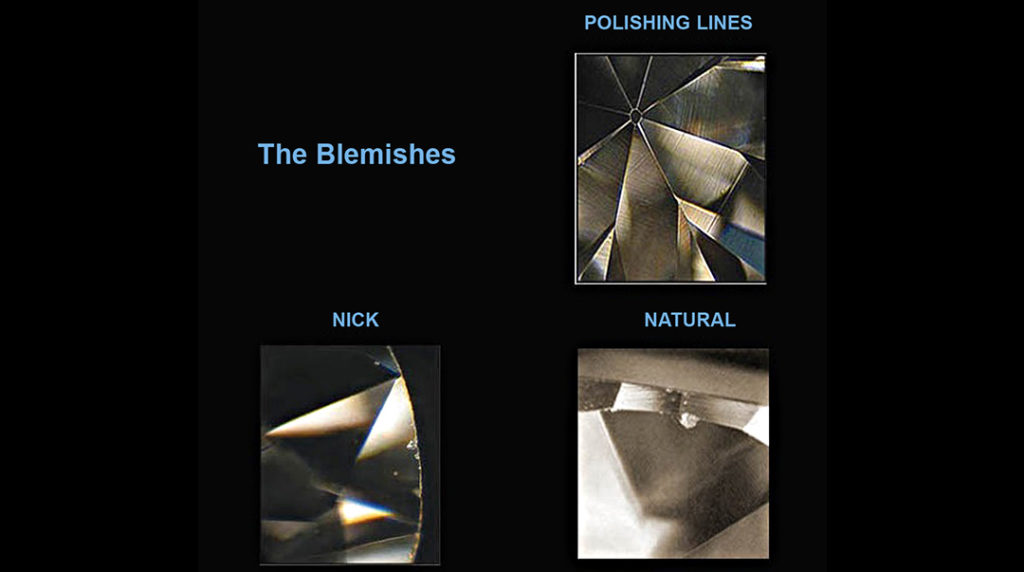
Diamond inclusions are among the major factors influencing the appearance of a diamond. An inclusion may have a visual impact on a finished diamond. There are various types of inclusions – knot, metallic, needle, cloud, feather, chip, graining, crystal inclusions etc. Diamond cutters make every effort to cut a stone so that inclusions are not visible from the table of the finished diamond.
Diamond Blemishes on the other hand are external flaws that appear on its surface. These flaws are mostly caused by improper cutting process or due to mishandling of diamond and are not present in all natural diamonds. Some of the diamond blemishes are natural: abrasion, burn marks, nicks, pit, knot lines, rough girdle and scratches. Blemishes and inclusions affect the clarity of diamond which in turn lowers the value of the diamond.
Anatomy of a diamond
Once cut and polished, all diamonds possess a shared set of characteristics, often referred to as the anatomy of the diamond. The five main parts of the diamond anatomy are table, crown, girdle, pavilion and culet. A diamond’s anatomy, or its basic structure, determines its proportions which in turn is responsible for the brilliance, dispersion and scintillation.
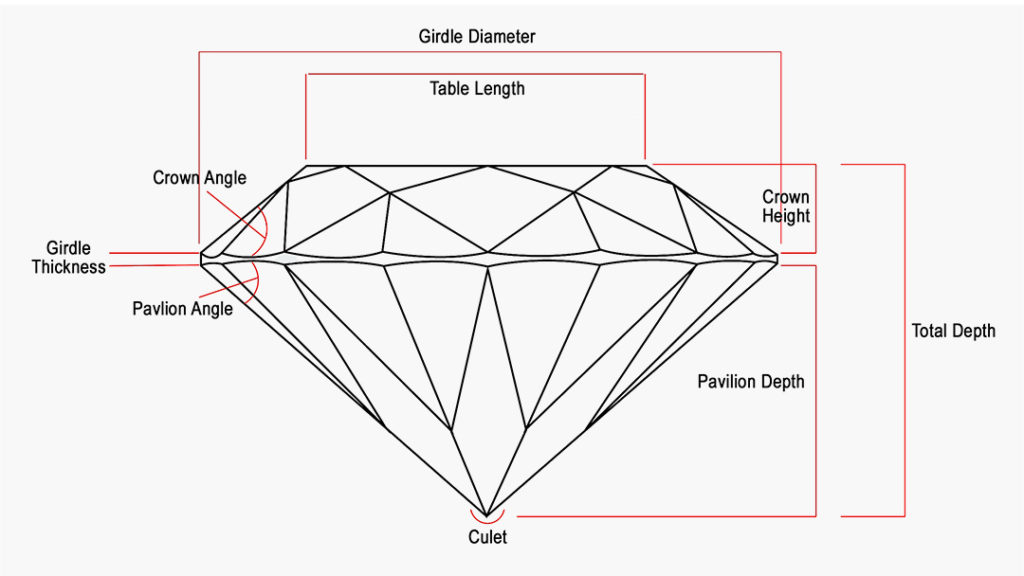
Triple X of a Diamond
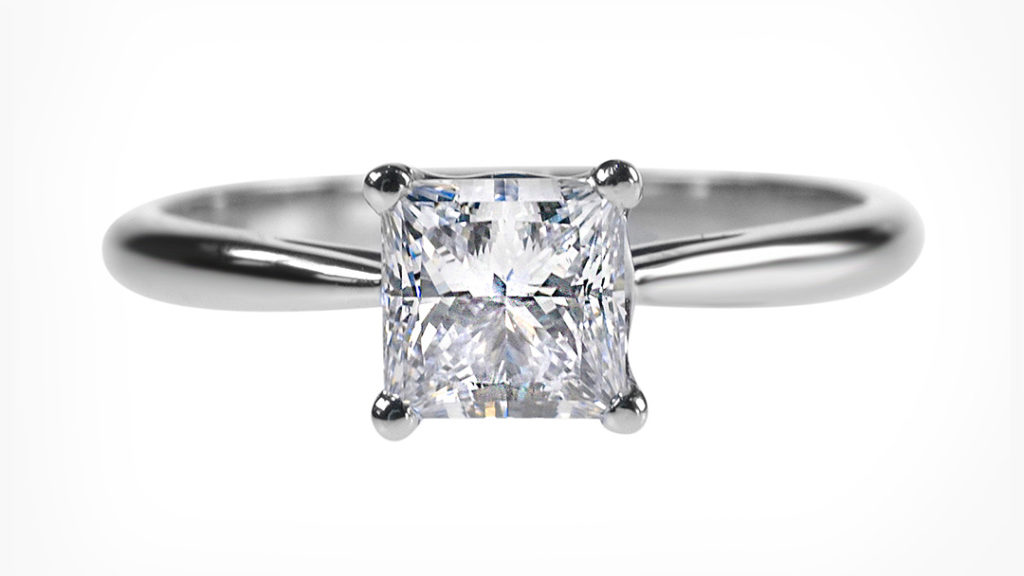
The Triple X Diamond is the most sought after diamond characteristic while purchasing a diamond. A Triple X diamond is the one which has been graded by laboratory ‘Excellent’ for three distinct qualities. Excellent Cut, Excellent Polish, Excellent Symmetry. This implies that the parameters of Cut, Polish and Symmetry of that particular diamond are all in the range of best possible combination.
What does Cut, Polish & Symmetry mean?
Diamond Cut refers to the proportion of the diamonds. Polish refers to the overall smoothness of the diamond’s surface. A well polished diamond can produce crisp reflections while a poorly polished diamond can look dull. Symmetry, on the other hand, refers to the exactness of shape, overall outline, placement and alignment of individual facets. A diamond with poor symmetry will have a visible deviation from its shape and reduced brilliance.
